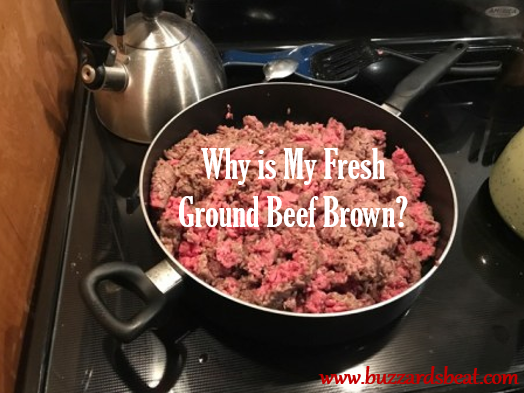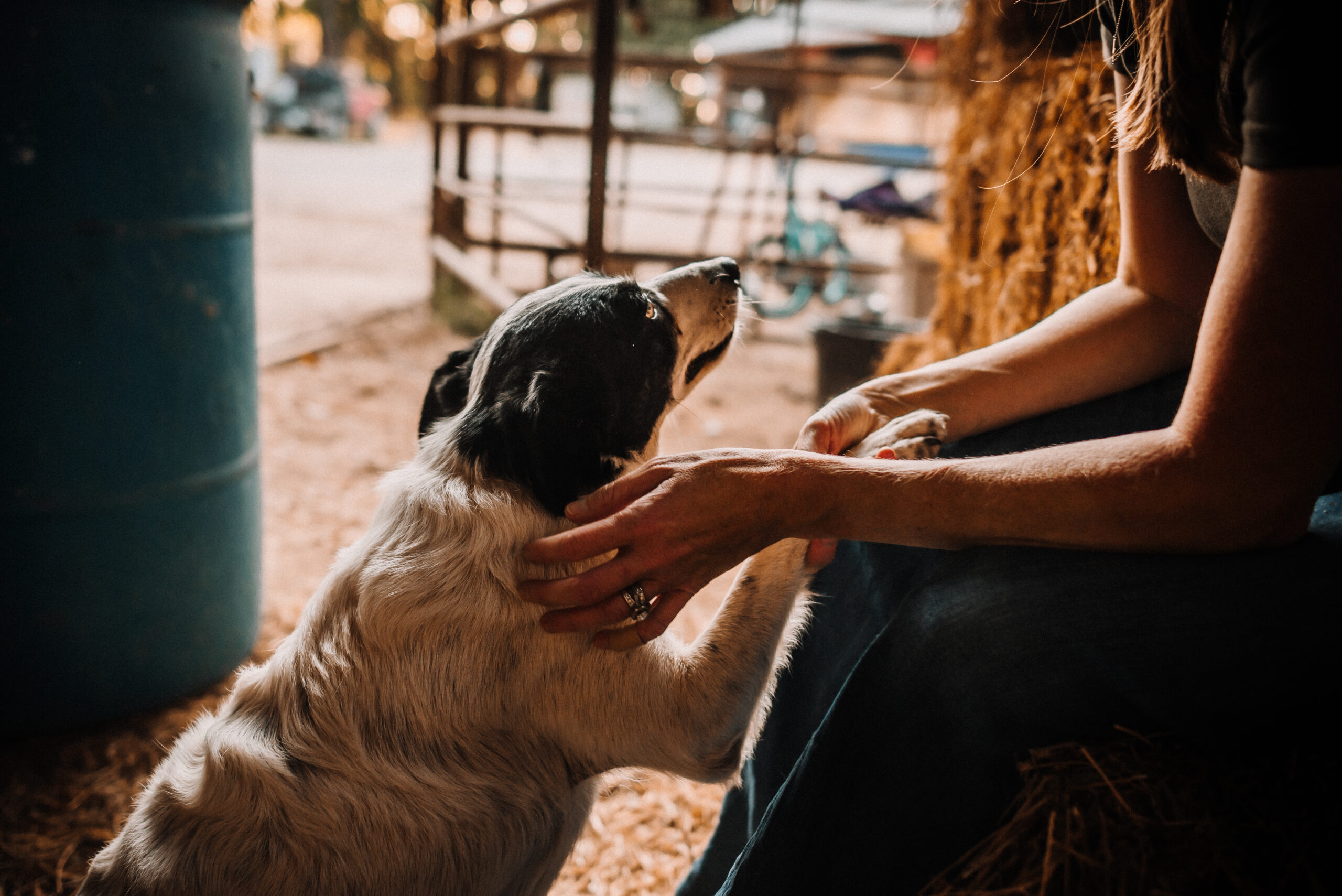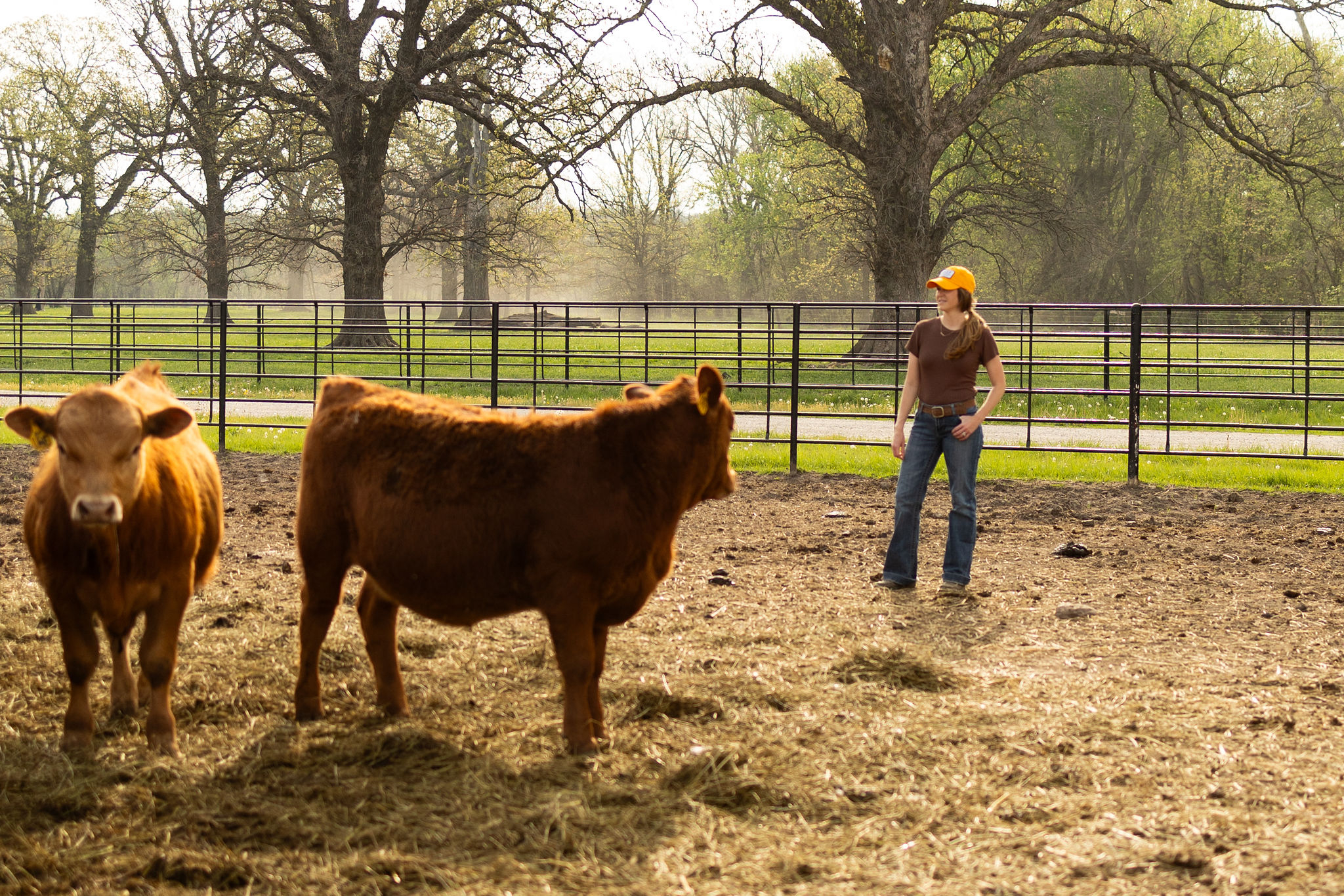About six weeks ago, I was prepping some ground beef for freezer meals to use when our little one arrived (to be honest, I was actually in active labor and trying to get ‘one more thing’ done on my list before heading to the hospital) and noticed that some of the ground beef in the package was starting to turn brown. Yet another package I had purchased was already brown on the outside and once I saw it, I immediately thought “Where’s my meat thermometer?”
Why? Because you should never judge the doneness of meat, especially ground meats, by the color. Why? Because color isn’t influenced solely by temperature and doesn’t determine doneness.

Straight out of the package and already brown? It’s not magic, it’s science!
Lots of people deem ground beef as ‘done’ when it’s all brown. In fact, many recipes you find online or in your favorite cookbook say, “Brown 1 lb. of ground beef and then add spices, etc.” Well, that may be the easiest way but it’s not exactly the safest.
You should ALWAYS use a meat thermometer to determine the doneness of meat – ground meats, including beef, pork, poultry and lamb, should be cooked to 160F. No exceptions. This will help protect your family from any potential pathogens that could be in your raw food. You can also ensure safe food by not using the same utensils for raw produce and raw meats, in addition to keeping raw meat at safe temperatures before cooking. Learn more about safe food preparation from the USDA Food Safety and Inspection Service.
While we’re on the topic of meat color, I have read commentary in some Facebook discussion groups that “grocery store beef is red because it’s injected with coloring.” This is false on so many levels. Fresh beef naturally has that appealing, bright cherry red color that you see below – no magic or sleight of hand involved – which appears due to the interaction of oxygen with iron in the muscle; its scientific name is oxymyoglobin. In contrast, the brown coloration that can occur over time (see below) is called metmyoglobin and starts to appear as the meat ages. It’s really that simple. No conspiracy theory, no food safety issues; just biology.

Example of ground beef color change
Take this package of ground beef for example, most of the package is red, but I had purchased this meat on a Thursday and it was Tuesday night when I prepared it. So the meat had probably been packaged for more than a week and if you look at the end of my knife, you can see that it was starting to brown. There’s nothing wrong with the meat – it’s safe to eat (and we have eaten most of it) – it’s just changing color due to biological influences. If I had tried to cook this based solely on the color, I could potentially undercook it due to the brown color already starting to appear.
The Superbowl and March Madness will be here before we know it and that means dips, appetizers and yummy snacks. Have no fear of snacking by simply cooking it to 160F (and whole muscle cuts to 145F). Enjoy!
Until next time,
~ Buzzard ~
Never miss a post again – sign up for automatic emails delivered to your inbox. Sign up on the homepage in the right side panel!




